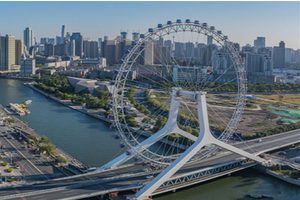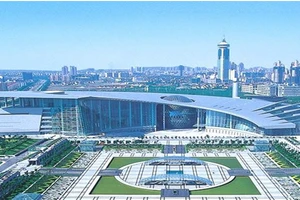Cruise tourism economy
The positive and negative impacts of cruise tourism on the economy are as follows.
1. Positive impact: the integration of economic benefits brought by the development of upstream and downstream industrial chains driven by the development of cruise tourism: the economic effects brought by the entry of cruise companies driven by the construction of cruise ports, the development of equipment manufacturing industry and port services. The supply of oil, water and spare parts generated by the arrival and docking of cruise ships has driven the economic benefits generated by the related industry transactions of related products and services. The development of transportation, international trade and supporting industries driven by cruise ship manufacturing industry.
2. Negative impact: Due to the market shutdown and the announcement by Japan and China's Taiwan Province region that international cruise ships are prohibited from stopping, the international cruise tourism market has suffered heavy losses. Some large cruise companies canceled their flights in China, and the direct losses were estimated to be 700-100 million RMB, while those with fewer voyages also suffered 50 million RMB, and the indirect losses were even greater.
Cruise economy appeared in the Caribbean in the mid-1960s, when it was the world's largest cruise destination, accounting for nearly half of the global passenger capacity. Since the mid-1960s, the cruise economy has been the economic model for the survival of the Caribbean.
Since the end of the last century, cruise tourism has maintained an average annual growth rate of 8%. According to the prediction of relevant institutions, the number of cruise tourists worldwide will reach 30 million in 2020.
In recent years, the world cruise economy has developed rapidly. The number of passengers in the global cruise market increased from 6.8 million in 1996 to 10.3 million in 2002, with an average annual growth rate of nearly 7%. Some international metropolises have successively infiltrated the elements of "cruise economy" in their economic development. For example, in Singapore, 1,200 sub-international cruise ships arrived in Hong Kong in 2001, and the cruise industry became the pillar of local tourism.
Relevant information shows that in the next three to five years, dozens of large cruise ships will be built on the international market and launched one after another. The international cruise economy is in the ascendant, so it is timely to develop it. Although the cruise economy in Asia is still in the development stage compared with Europe and America, it has great potential for development. In the past eight years, the number of cruise passengers has more than tripled. It can be predicted that with the opening of some new routes suitable for the characteristics of the Asian market, the scale of the Asian cruise economy will be further expanded. Some port cities that have the conditions to develop cruise economy should seize this opportunity to develop cruise economy and turn their cities into cruise cities.
Demand for cruise ships surged
In fact, in recent years, many international cruise companies, including Costa Cruises, have successively deployed in China. In 2010, the number of international cruise ships visiting China's coastal cities reached 128, a year-on-year increase of 68.4%, while in 2005, there were only 35 cruises. In 2010, there were 95 international cruise passenger liners with China's coastal cities as their departure ports, an increase of 18.8% year-on-year, while in 2005, there were none.
According to the statistics of Cruise Yacht Branch of China Communications and Transportation Association (hereinafter referred to as "CCYIA"), in 2010, there were 790,000 inbound and outbound tourists from Chinese mainland (excluding Hong Kong, Macao and Taiwan), up 20.1% compared with 658,000 in 2009, and 462,000 inbound and outbound international tourists came to China by cruise, up 15.5%.






